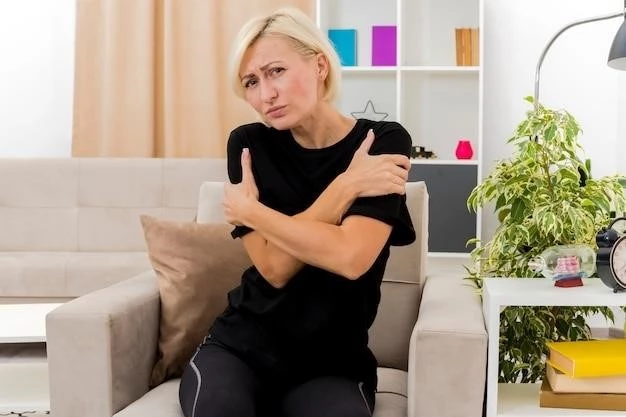Environmental Factors
Environmental factors such as prenatal exposure to certain toxins‚ maternal illness during pregnancy‚ and nutritional deficiencies can contribute to the development of chondrodysplasia punctata. These factors can impact fetal growth and skeletal development‚ leading to the manifestation of this rare skeletal condition.
Genetic Mutations
Chondrodysplasia punctata can also be caused by genetic mutations affecting the enzymes involved in the metabolism of cholesterol and fatty acids. These mutations can disrupt normal skeletal development and lead to the characteristic features of the condition.
Skeletal Abnormalities
Individuals with humerometacarpal type of chondrodysplasia punctata may present with skeletal abnormalities such as shortening of the limbs‚ abnormal curvature of the spine‚ and characteristic changes in the bones of the hands and feet. These structural anomalies can impact mobility and overall function.
Growth Retardation
Growth retardation is a common symptom in individuals with humerometacarpal type of chondrodysplasia punctata‚ leading to short stature and developmental delays. The impaired growth is often associated with the skeletal abnormalities characteristic of this condition‚ affecting both physical and functional aspects of the individual’s life.
Diagnostic Imaging
Diagnostic imaging techniques such as X-rays‚ CT scans‚ and MRI are essential for assessing skeletal abnormalities and confirming the diagnosis of chondrodysplasia punctata. These imaging modalities allow healthcare providers to visualize the structure and condition of bones‚ joints‚ and other affected tissues‚ guiding the appropriate treatment approach.
Medication and Surgical Interventions
Medication and surgical interventions may be recommended to manage symptoms and address complications of chondrodysplasia punctata. Treatment options can include pain management medications‚ physical therapy‚ orthopedic surgeries to correct skeletal deformities‚ and other supportive measures tailored to the individual’s specific needs and condition.
Inheritance Patterns
Chondrodysplasia punctata can have different inheritance patterns‚ including autosomal dominant‚ autosomal recessive‚ or X-linked recessive. Understanding the genetic basis of the condition is crucial for genetic counseling‚ family planning decisions‚ and potential future therapeutic interventions.
Genetic Testing
Genetic testing plays a crucial role in identifying specific gene mutations associated with chondrodysplasia punctata. Through genetic analysis‚ healthcare providers can confirm the diagnosis‚ provide insights into the inheritance pattern‚ offer genetic counseling to families‚ and potentially guide personalized treatment strategies based on the individual’s genetic profile.
Physical Therapy
Physical therapy plays a key role in managing humerometacarpal type of chondrodysplasia punctata by focusing on improving mobility‚ strength‚ and coordination. Customized exercise programs and therapeutic interventions can help individuals enhance their physical function‚ prevent complications‚ and optimize their overall quality of life.
Adaptive Equipment

Utilizing adaptive equipment such as orthotic devices‚ customized splints‚ and mobility aids can help individuals with humerometacarpal type of chondrodysplasia punctata enhance their independence‚ facilitate daily activities‚ and improve their overall quality of life. These specialized tools offer support and assistance tailored to the individual’s specific mobility and functional needs.
Long-Term Outlook
The long-term outlook for individuals with chondrodysplasia punctata can vary depending on the severity of symptoms‚ the presence of complications‚ and the effectiveness of treatment strategies. Close monitoring‚ specialized care‚ and early intervention can significantly impact the quality of life and overall prognosis for affected individuals.
Complications and Survival Rates
Individuals with chondrodysplasia punctata may experience complications such as respiratory problems‚ joint deformities‚ and neurological issues. The survival rates for this condition depend on the specific genetic subtype‚ the presence of associated abnormalities‚ and the individual’s response to treatment interventions. Multidisciplinary care and ongoing medical management are essential in addressing complications and improving outcomes.
Current Studies and Findings
Ongoing research on chondrodysplasia punctata focuses on elucidating the underlying genetic mechanisms‚ developing targeted therapies‚ and improving early detection methods. Recent findings have highlighted potential gene therapies‚ novel treatment approaches‚ and advancements in prenatal screening‚ offering hope for enhanced management and outcomes for individuals affected by this rare skeletal disorder.
Potential Therapeutic Developments
Emerging therapeutic developments in chondrodysplasia punctata research offer potential treatment avenues such as enzyme replacement therapies‚ gene editing techniques‚ and pharmacological interventions targeting specific molecular pathways. These innovative approaches hold promise for mitigating symptoms‚ addressing underlying genetic abnormalities‚ and improving the overall quality of life for individuals with this rare skeletal condition.
Occupational Therapy
Occupational therapy is vital in supporting individuals with humerometacarpal type of chondrodysplasia punctata to enhance their adaptive skills‚ promote independence in daily activities‚ and address challenges related to hand function and fine motor skills. Occupational therapists tailor interventions to improve quality of life and maximize functional abilities.
Psychological Support and Counseling
Psychological support and counseling play a crucial role in addressing the emotional and mental well-being of individuals with humerometacarpal type of chondrodysplasia punctata. By providing psychosocial support‚ coping strategies‚ and guidance in navigating challenges‚ mental health professionals contribute to enhancing overall quality of life and resilience in facing the complexities of the condition.
